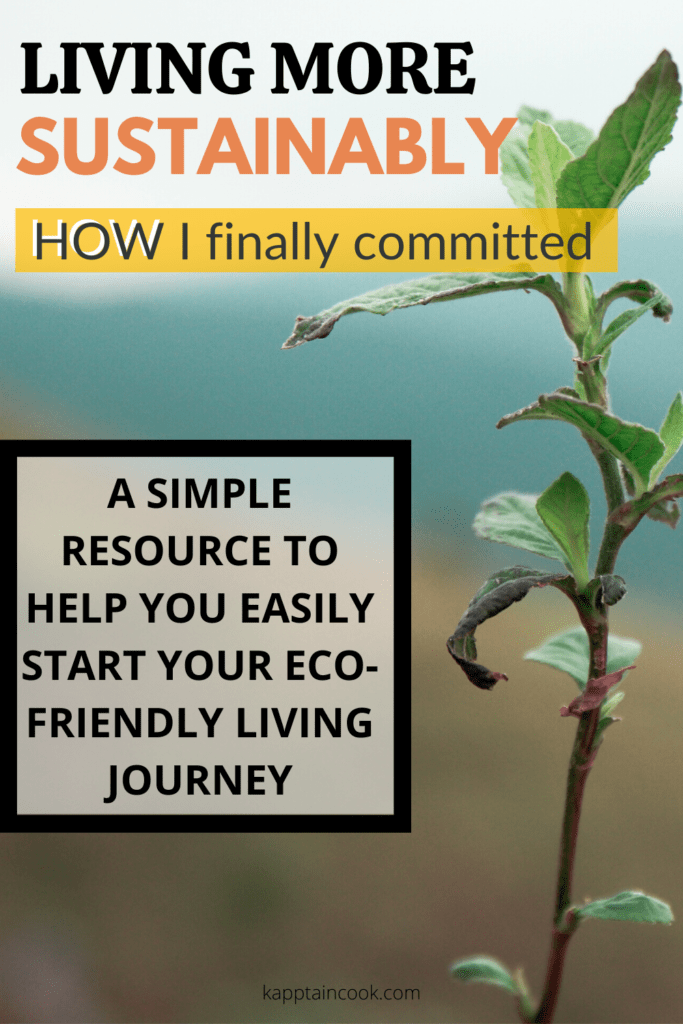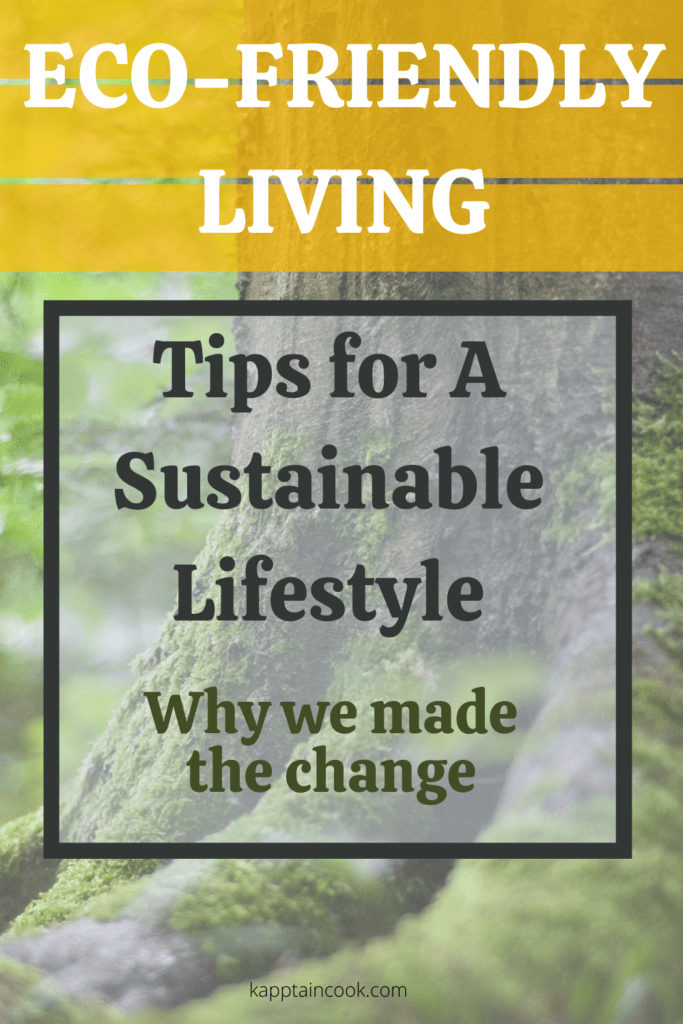With coronavirus keeping everyone in lockdown it’s easy to get wrapped up in social media and the news. Jonathan and I found ourselves constantly trying to find ways to pass the time and not lose our mind indoors. However, the more we came across “good news” relating to the environment the more we realized we needed to make a change in the way we treat the planet. Enter the need to change to eco-friendly living.
Some of the good news we encountered that led us to this change include how the canals in Venice are clear enough for animals to come once more or how the Himalayas are visible from a distance when pollution completely covered these views before. Seeing these articles and realizing the collective impact we have on the environment were enough to prove to Jonathan and myself that change is not only possible but necessary.
Types of people when it comes to climate change
In sales you have the people who simply will not buy, some who would consider it but need to be convinced to purchase and those who are actively looking to purchase. You have the same type of distribution in people relating to climate change.
- The Disbelievers: This group doesn’t think climate change exists despite the facts listed on reputable organizations about how our climate is heating due to increased greenhouse emissions. Probably no amount of data or science will convince them otherwise, unless they are directly impacted by climate change. Even then they may find a different cause to blame. They are not open to change or to differing perspectives.
- Passive Believers: People who do believe climate change is real and we are the main cause speeding this trend. However, they are passive about their desire to make a change. This is definitely the group I fall into. It may be because changing is not always easy or convenient, you feel at a loss on how to make an impact, feel discouraged or unmotivated, don’t think your small change can make a difference, or simply lack the correct and simplified information to understand your impact.
- Active Believers: The people who are already making changes to their lives to lessen their environmental footprint. They are actively engaged in teaching others about climate change, creating or using eco-friendly products and engaging in sustainable practices regularly.
I’m going to focus on the passive believers because, not only do I fall into this category currently, but simplifying the process to transition you from a passive to active believer is the end game. I think most of us fall into this transition category and want to change to eco-friendly living. With the right strategy and information, sustainability can become an approachable topic that anyone can tackle.

Why my sustainability approaches have failed in the past
I’ve wanted to become vegan in the past and managed to do it for only two weeks. I’ve wanted to make the change to eco-friendly living before by cutting out plastic straws. Yet I still used one when I’d buy a smoothie or a cold beverage at a store. I find myself watching a documentary about the Earth, or seeing a post about the amount of plastic out in the oceans and I want to fix it all and make a revolutionary change. Then I end up failing miserably because it’s hard and darn near impossible to commit to doing it all. You’ll burn out, you’ll get frustrated, you’ll end up researching nonstop and never think you’re doing enough.
Comparing myself to others on their sustainability journey
A common factor in my previous attempts at being sustainable was my mindset. I was forcing myself to change and tackle everything at once because I was comparing myself to others who were doing it all. They were swimming out in the ocean and collecting plastic, using reusable straws, protesting for environmental change, using eco-friendly household cleaners, cutting out meat consumption entirely and becoming vegan…and the list goes on. However, none of those changes were feasible for me to make all at once and so it resulted in unsuccessful attempts to change.
Finding something that worked for me
The main difficulty was getting out of this mentality and shifting my focus towards achieving a sustainable lifestyle, one baby step at a time. I had to stop comparing myself to others who preach 100% veganism or other all or nothing ideologies about living waste free. Instead I had to find something that worked for me and I could commit to. Everyone will have their own tolerance for how much change they can enact within a certain timeframe. If I wanted to become vegetarian, phasing out meat is a much more feasible approach towards achieving that goal instead of cutting everything out cold turkey, especially when I barely knew how to cook.
It is critical to believe that each incremental step you take, even a small one, sets the framework to make a difference. It’s important to realize that you won’t be zero waste immediately and that’s ok. If you can commit to making a gradual transition towards more eco-friendly living then you’re on the right path.

How to make the change toward eco-friendly living
Changing anything in your lifestyle can be daunting, especially when it comes to a topic like climate change and sustainability. I know I felt this way when I first tried to change towards more sustainable living. Why has something that should be so simple and mindless, like protecting the environment, become such a complicated task? You should not feel like you need to be a subject matter expert to figure it out. I spent hours researching proper ways to recycle, which items are and aren’t eco-friendly, and what I can do to lessen my impact immediately. All it left me was feeling inundated by information and overwhelmed.
With these steps you can begin your transition:
Step one: Change your mindset
Life is all about balance and you have to find that balance for yourself. Identify that everyone is different and will go at different paces on their journey. There’s no point in comparing yourself to others because you will just think you are not doing enough, lose motivation and end up continuing to live wastefully. Instead step back and think what you are truly capable of implementing and at what pace you are comfortable with.
Be open to change
You must be open to the idea of change. A lot of times we don’t change our mindset about certain things because it’s what we know and are used to. You’ve always used that brand of toothbrush, shampoo, etc. and you know where it is in the grocery store. Trying new things and changing from your norm is a critical component to make this transition. Be open to trying things even if they don’t work for you. At least you can write a review of the product to help another person on their eco-friendly journey and you can test something else.
Rethink convenience
Convenience is another major factor to tackle. Grabbing a plastic straw is more convenient than bringing your own reusable straw from home. Using a disposable coffee cup is more convenient than remembering to bring your own coffee cup and having to wash it somewhere. Most of these items are so heavily used because they revolve around being easy and convenient for consumers. This makes using them a pretty tough habit to shake but it’s important to see each action as part of the bigger picture. Be mindful and think how each individual action you make, when compounded, impacts the Earth.
Commit and believe in making a change to eco-friendly living
Lastly, you need to make a commitment to make a change and believe that it is a worthwhile endeavor. Jonathan and I had to reevaluate our values and actions to ensure eco-friendly living is something we wanted and could hold ourselves accountable to. It’s easy to say ok I’m going to buy a reusable water bottle to cut down on buying plastic water bottles, but if every time we go out we never take the bottle with us and instead purchase a plastic water bottle then it’s not really making a difference.

Step two: Make it incremental
It’s pretty hard to stop any behavior cold turkey and making the change to eco-friendly living is the same. If you can just cut all plastic and non-recyclable material out of your life, grow your own food, make your own clothing and go vegan then kudos to you. I, for one, am NOWHERE near that level and presume most of you aren’t either. The simplest way we’ve found to start being more sustainable is to take baby steps toward our end goal.
Engage and educate yourself on eco-friendly living
Start with reading one article a week about eco-friendly living or another environmental topic of choice. Educating yourself will engage and excite you about the topic and help you commit to change. I say one article a week, or even a day, because you don’t want to find yourself reading nonstop on the topic. If you do you may find yourself feeling overwhelmed with how many things you could potentially change. The purpose of this exercise is to help motivate you to try something new. This will encourage you to commit to making a sustainable lifestyle change.
Make small changes you can implement immediately
Next, pick small simple changes that you feel comfortable implementing immediately. You don’t have to throw away everything in your house that’s made from plastic. That’s just adding to the waste mentality we want to avoid. Some ideas for quick win changes include:
- When you run out of tomato sauce be sure to buy one sold in a glass jar instead of plastic.
- Make it a goal to shave off 3 minutes of your current shower time and do so consistently.
- Cut out meat consumption one day a week. Replace your meals with vegetable or starch based products for that day. If you’re a die hard carnivore rotate different proteins instead of only consuming beef.
The important thing is to go at a pace you feel comfortable with and take baby steps. You have to be open to making and sustaining a change. However, it doesn’t have to come all at once to the point of overwhelming you. Easing into it and incrementally adding more tasks or products to change can make it much easier for you to commit to your sustainability journey.
Step three: Make it a habit

The hardest part of making any change in your life is staying on track, especially when it isn’t simple. The best way I’ve found to hold myself accountable is to keep a habit tracker visible. I regularly review it check off the progress I am making. Seeing it on display helps remind me daily why I am making the change to eco-friendly living. It makes me keep up with the habit as opposed to just distracting myself with other tasks.
Print your habit tracker and laminate it to make it reusable every month. Once you start building a string of consecutive days engaging in your new behavior you’ll want to keep the momentum going. Visualizing your progress is a great way to keep you focused, motivated and feel a sense of accomplishment.
We can still make a change!
It’s unfortunate that it took countries all around the world enforcing strict lockdowns for pollution levels to drop and air quality to improve. This is a wake up call to see how our collective impact has such a mighty effect on the planet. It shows us that we can still help slow climate change if we take the needed precautions. Jonathan and I have just begun our sustainable living journey and we are certainly taking it one step. We are excited to commit to reducing our carbon footprint and making it easier for others to do the same.
What can you do today to make a small change for the environment? Let us know in the comments below!
